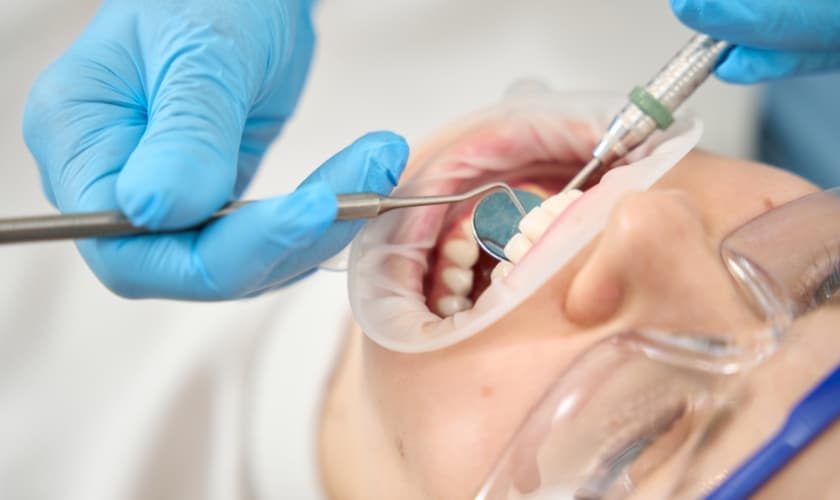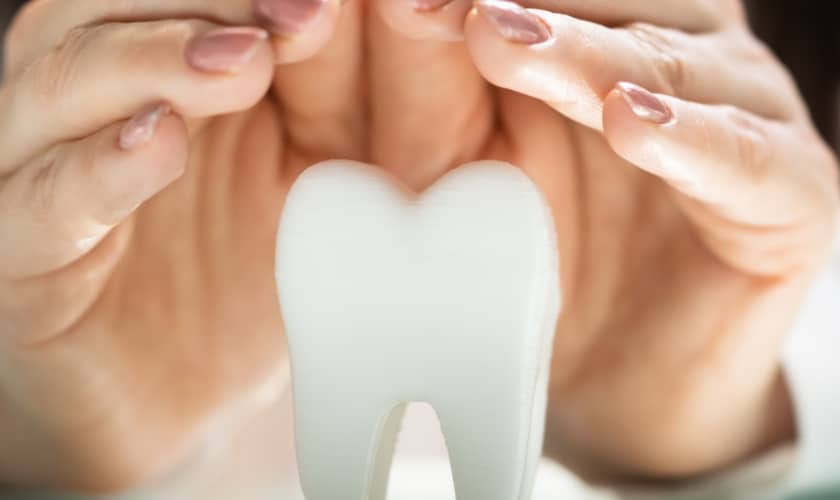A dazzling smile has the power to light up a room, and teeth whitening stands as a beacon of hope for achieving that radiant smile. But have you ever considered the science behind this transformational process? Understanding the mechanisms and intricacies of teeth whitening unveils the magic behind its effectiveness. Let’s set off on a scientific journey to explore the wonders that bring brilliance to your smile.
The Basis of Tooth Color
Various factors, including genetics and lifestyle choices, influence the natural color of teeth. The enamel the outer layer of teeth is translucent and comprises the underlying dentin, determining the color of the tooth. Dentin naturally ranges from yellow to grayish, influencing the overall appearance of the smile.
Causes of Tooth Discoloration
Tooth discoloration can occur due to extrinsic and intrinsic factors. Extrinsic stains develop on the surface of the enamel due to habits like consuming coffee, tea, red wine, or smoking. Intrinsic discoloration, on the other hand, originates from within the tooth structure and is often caused by trauma, medications, or excessive fluoride exposure during tooth development.
The Role of Tooth Whitening Agents
Teeth whitening procedures primarily involve the use of bleaching agents to alter the color of the enamel. These agents, typically hydrogen peroxide or carbamide peroxide, penetrate the enamel and dentin, breaking down complex stain molecules through oxidation, ultimately brightening the tooth’s appearance.
Understanding Oxidation in Whitening
Oxidation is the fundamental process driving teeth whitening. The active ingredients in whitening products release oxygen molecules that penetrate the enamel. These oxygen molecules interact with the discolored molecules, breaking them into smaller, less visible fragments, thereby lightening the tooth color.
Different Methods of Teeth Whitening
Teeth whitening methods vary, including in-office treatments supervised by dental professionals and at-home kits. In-office procedures often use higher concentrations of whitening agents for faster and more dramatic results. At-home kits generally have lower concentrations and are used over a more extended period for gradual whitening.
Mechanism of In-Office Whitening
In-office whitening typically involves the application of a high-concentration bleaching gel directly to the teeth, followed by the activation of the gel with light or heat. This accelerates the oxidation process, enhancing the efficiency of the whitening agents.
At-Home Whitening Techniques
At-home whitening kits usually contain whitening gel in trays customized to fit your teeth. These trays are worn for a prescribed duration daily, allowing the whitening agents to penetrate the enamel and remove stains gradually over time.
Safety and Considerations
While teeth whitening is generally safe, considerations must be taken. Higher concentrations of bleaching agents used in professional treatments may increase sensitivity or irritation. Following manufacturer instructions and consulting with a dental professional minimizes risks and ensures safe and effective treatment.
Duration and Longevity of Whitening Effects
The duration of whitening effects varies among individuals and depends on factors such as lifestyle choices and oral hygiene practices. With proper maintenance, including good oral hygiene and avoiding stain-causing substances, the results of whitening treatments can last for several months to a few years.
Potential Side Effects and Sensitivity
Some individuals may experience temporary tooth sensitivity or gum irritation during or after whitening treatments. This sensitivity typically subsides shortly after treatment, but using desensitizing toothpaste or consulting with a dentist can help alleviate discomfort.
Teeth whitening isn’t just about achieving a brighter smile; it’s a science-backed process rooted in oxidation and the breakdown of discoloration. Understanding the mechanisms behind this transformation sheds light on the magic that rejuvenates smiles. By navigating the intricacies of teeth whitening, you’re not just enhancing aesthetics but unraveling the scientific brilliance that illuminates your confident and radiant smile.





